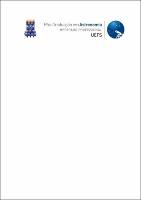| Compartilhamento |


|
Use este identificador para citar ou linkar para este item:
http://tede2.uefs.br:8080/handle/tede/1231Registro completo de metadados
| Campo DC | Valor | Idioma |
|---|---|---|
| dc.creator | Silva, Guilherme da Rocha | - |
| dc.creator.Lattes | http://lattes.cnpq.br/5795559590862124 | por |
| dc.contributor.advisor1 | Pereira, Marildo Geraldête | - |
| dc.date.accessioned | 2021-04-07T22:55:09Z | - |
| dc.date.issued | 2019-12-13 | - |
| dc.identifier.citation | SILVA, Guilherme da Rocha. O uso do planetário como recurso educacional no ensino de ciências. 2019. 136 f. Dissertação (Mestrado Profissional em Astronomia)- Universidade Estadual de Feira de Santana, Feira de Santana, 2019. | por |
| dc.identifier.uri | http://tede2.uefs.br:8080/handle/tede/1231 | - |
| dc.description.resumo | Dentro de um cenário onde os principais indicadores que avaliam o nível da educação das escolas públicas brasileiras revelam um resultado preocupante, principalmente nos campos das Ciências Exatas, o trabalho a seguir descreve uma atividade educacional em uma escola pública, com metodologia aproximada a uma pesquisa-intervenção, tendo sido utilizado como ferramenta de intervenção um Planetário móvel, como um espaço não formal de educação, abordando neste, temas da Astronomia, Matemática e Física do ensino médio, com o objetivo de promover a imersão e inserção do estudante no campo das ciências e uma melhor compreensão por eles dos conceitos das Ciências Exatas. O público alvo foi composto por estudantes dos cursos técnicos em Informática e Edificações da modalidade de Educação Profissional Integrada ao Ensino Médio, que passaram por uma pesquisa para levantamento do conhecimento, interesse e expectativas no campo das Ciências e das descobertas que experimentariam durante as atividades com o Planetário. Sendo assim, foram criados como Produtos Educacionais um vídeo fulldome, para exibição no planetário junto aos alunos, abordando a formação estelar e os principais astros do Sistema Solar e o Guia Educacional: O Sistema Solar, para apresentar aos estudantes os principais astros do Sistema Solar trazendo informações e ilustrações. Além de buscar um melhor aproveitamento dos saberes das Ciências pelos estudantes, a atividade almeja promover a divulgação dos planetários como recursos educacionais extraordinários e acessíveis aos professores e estudantes das escolas da região. | por |
| dc.description.abstract | Within a scenario where the main indicators that evaluate the level of education of Brazilian public schools reveal a worrying result, mainly in the fields of Exact Sciences, the following work describes an educational activity in a public school, with a methodology approximated to an intervention-research, having been used as an intervention tool a mobile Planetarium, as a non-formal space of education, approaching in this, themes of Astronomy, Mathematics and Physics of high school, with the objective of promoting the immersion and insertion of the student in the field of sciences and a better understanding by them of the concepts of Exact Sciences. The target public was composed by students of the technical courses in Informatics and Buildings of the modality of Professional Education Integrated to High School, who went through a research to survey the knowledge, interest and expectations in the field of Sciences and the discoveries they would experience during the activities with the Planetarium. Thus, a fulldome video was created as Educational Products, to be exhibited in the planetarium with the students, approaching the star formation and the main stars of the Solar System and the Educational Guide: The Solar System, to present to the students the main stars of the System bringing information and illustrations. In addition to seeking a better use of science knowledge by students, the activity aims to promote the dissemination of the planetary as extraordinary educational resources and accessible to teachers and students of schools in the region. | eng |
| dc.description.provenance | Submitted by Ricardo Cedraz Duque Moliterno (ricardo.moliterno@uefs.br) on 2021-04-07T22:55:09Z No. of bitstreams: 1 4._Dissertacao_MPASTRO_Guilherme_V8.0_FINAL.pdf: 5666861 bytes, checksum: 41ba5b086edf41d99db0b27d89621266 (MD5) | eng |
| dc.description.provenance | Made available in DSpace on 2021-04-07T22:55:09Z (GMT). No. of bitstreams: 1 4._Dissertacao_MPASTRO_Guilherme_V8.0_FINAL.pdf: 5666861 bytes, checksum: 41ba5b086edf41d99db0b27d89621266 (MD5) Previous issue date: 2019-12-13 | eng |
| dc.format | application/pdf | * |
| dc.thumbnail.url | http://tede2.uefs.br:8080/retrieve/6277/4._Dissertacao_MPASTRO_Guilherme_V8.0_FINAL.pdf.jpg | * |
| dc.language | por | por |
| dc.publisher | Universidade Estadual de Feira de Santana | por |
| dc.publisher.department | DEPARTAMENTO DE CIÊNCIAS EXATAS | por |
| dc.publisher.country | Brasil | por |
| dc.publisher.initials | UEFS | por |
| dc.publisher.program | Mestrado Profissional em Astronomia | por |
| dc.rights | Acesso Aberto | por |
| dc.subject | Espaços não formais | por |
| dc.subject | Astronomia | por |
| dc.subject | Vídeo fulldome | por |
| dc.subject | Non-formal spaces | eng |
| dc.subject | Astronomy | eng |
| dc.subject | Fulldome videos | eng |
| dc.subject.cnpq | CIENCIAS EXATAS E DA TERRA::ASTRONOMIA | por |
| dc.title | O uso do planetário como recurso educacional no ensino de ciências | por |
| dc.type | Dissertação | por |
| Aparece nas coleções: | Coleção UEFS | |
Arquivos associados a este item:
| Arquivo | Descrição | Tamanho | Formato | |
|---|---|---|---|---|
| 4._Dissertacao_MPASTRO_Guilherme_V8.0_FINAL.pdf | Arquivo em texto completo. | 5,53 MB | Adobe PDF |  Baixar/Abrir Pré-Visualizar |
Os itens no repositório estão protegidos por copyright, com todos os direitos reservados, salvo quando é indicado o contrário.




